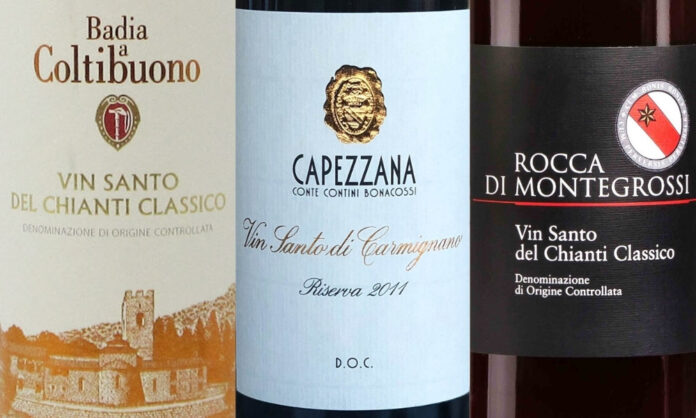
What are the best Vin Santo? Discover the best Vin Santo recommended by us with photos and description. To learn more, we also recommend articles on the best Italian sweet wines.
Do you want to indicate a company and a wine? Write to us
INDEX
VIN SANTO
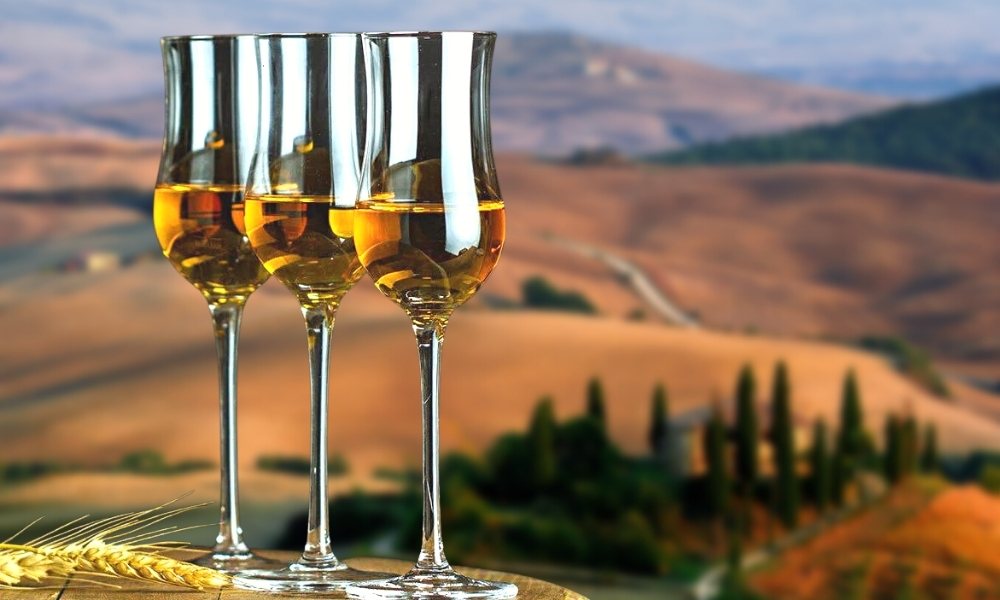
Vin santo is a sweet Tuscan wine produced by drying grapes, placed on racks or hung, in closed and ventilated environments called vinsantaie. The grapes used to produce the Vin Santo are Trebbiano and Malvasia, in the case of the vinsanto eye of partridge is also used the Sangiovese.
The long vinification of Vin Santo (with aging of at least 3 years) takes place in the traditional Caratelli, small barrels of 50 and 200 liters of oak or chestnut but also acacia and cherry.
Traditionally, Vin Santo is fermented and refined with the traditional ‘Madre’, a deposit of lees from previous vinifications kept by the cellars over the years and which gives the wines organoleptic complexity. Today, to trigger fermentations, we tend to inoculate selected, more stable yeasts, adding a minimum percentage of mother to be faithful to tradition.
BEST VIN SANTO recommended by Jean Marco Palmieri

What are the best Vin Santo?
Discover the wines recommended by Italy’s Finest Wines with our tasting so that everyone can find the ideal wine for their tastes and needs.
You will find many of the most iconic and historic companies but also those that have stood out for their unique and original character.
Vin Santo di Carmignano Riserva 2014 – Capezzana
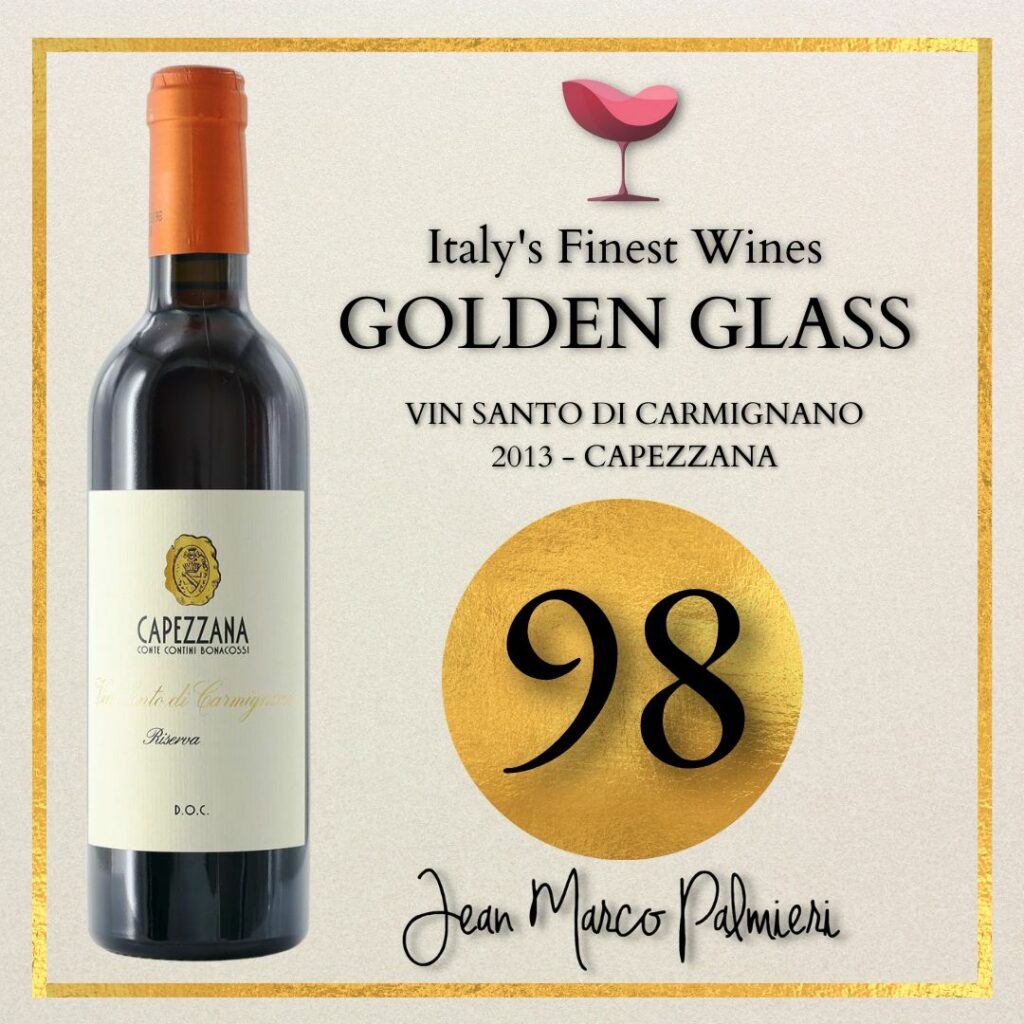
Characteristics: It opens with notes of dried figs and candied orange peel to continue towards shades of white flowers and cloves. The sip is soft and full-bodied, with a honeyed finish.
Vinified in small casks of chestnut, oak and cherry, it ages for five years.
A sweet wine characterized by a very pleasant softness and aromas that become even more elegant with aging in the bottle. Deservedly to be counted among the best Vin Santo, produced in a limited number.
Grapes: Trebbiano 90%, San Colombano 10%
Area: Carmignano
Vin Santo del Chianti Classico 2011 – Rocca di Montegrossi
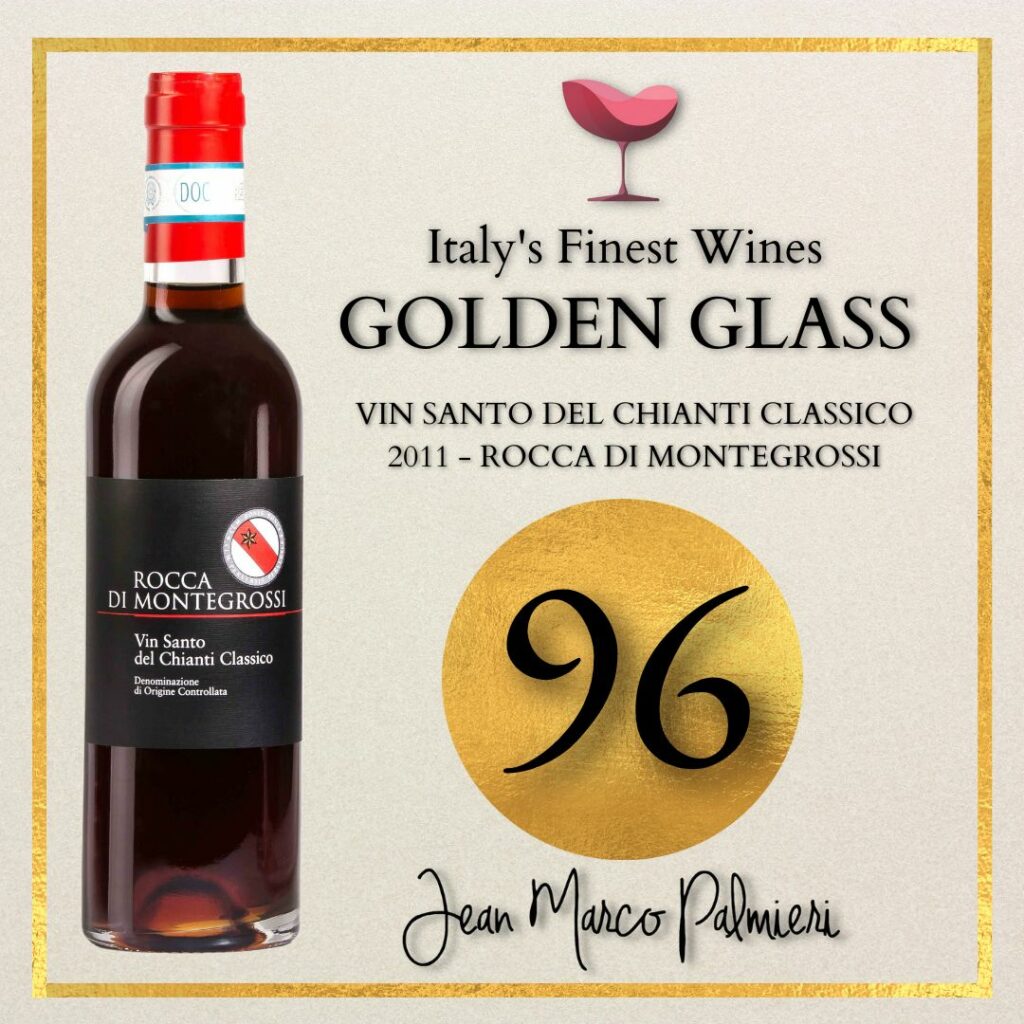
Characteristics: Intense notes of withered fruits are embellished with delicate nuances of verbena and a finish with echoes of roasting. The sip is sweet and bursting, with a very pleasant saline presence on the finish that invites you to drink it.
It ferments and matures in small casks of different woods (cherry, oak, dark brown) for about 8 years.
A riot of aromas that are the prelude to a sip of great volume and length. With full rights among the best Vin Santo for territorial character.
Grapes: 100% Malvasia Bianca del Chianti
Area: Chianti Classico (Gaiole in Chianti)
Vin Santo del Chianti Classico 2012 – Badia a Coltibuono
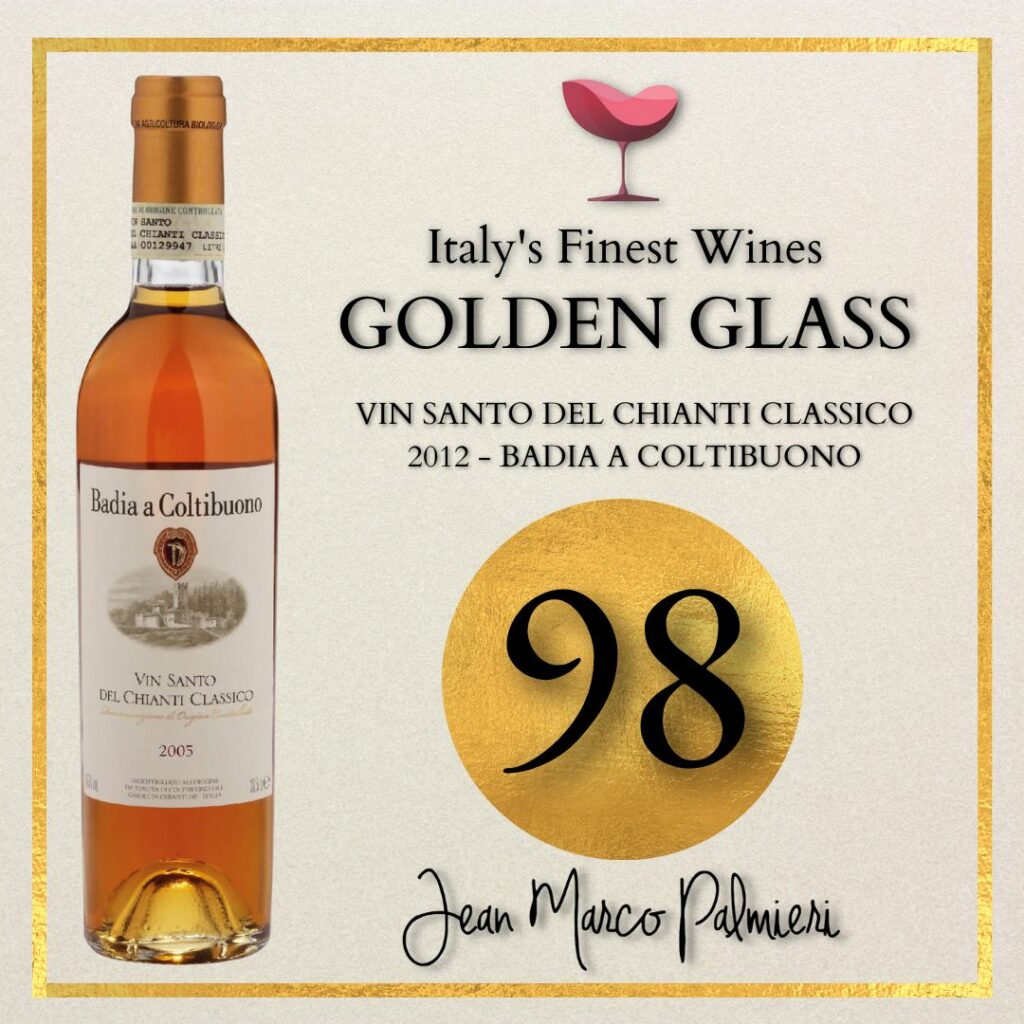
Characteristics: Apricot, figs and citrus peel blend with notes of toasted almonds, dehydrated dates and sweet spices. On the palate it is soft and full-bodied, seducing with an excellent freshness that makes the sip lean.
Refine for at least six years in small oak casks.
Produced by one of the best wineries in the Chianti Classico area, the Vin Santo di Badia a Coltibuono is deep and intense, with a marked minerality that makes it even more seductive. Fully among the best Vin Santo for aromaticity and balance.
Grapes: Trebbiano, Malvasia
Area: Chianti Classico (Gaiole in Chianti)
Vin Santo del Chianti Classico 2009 – Isole e Olena
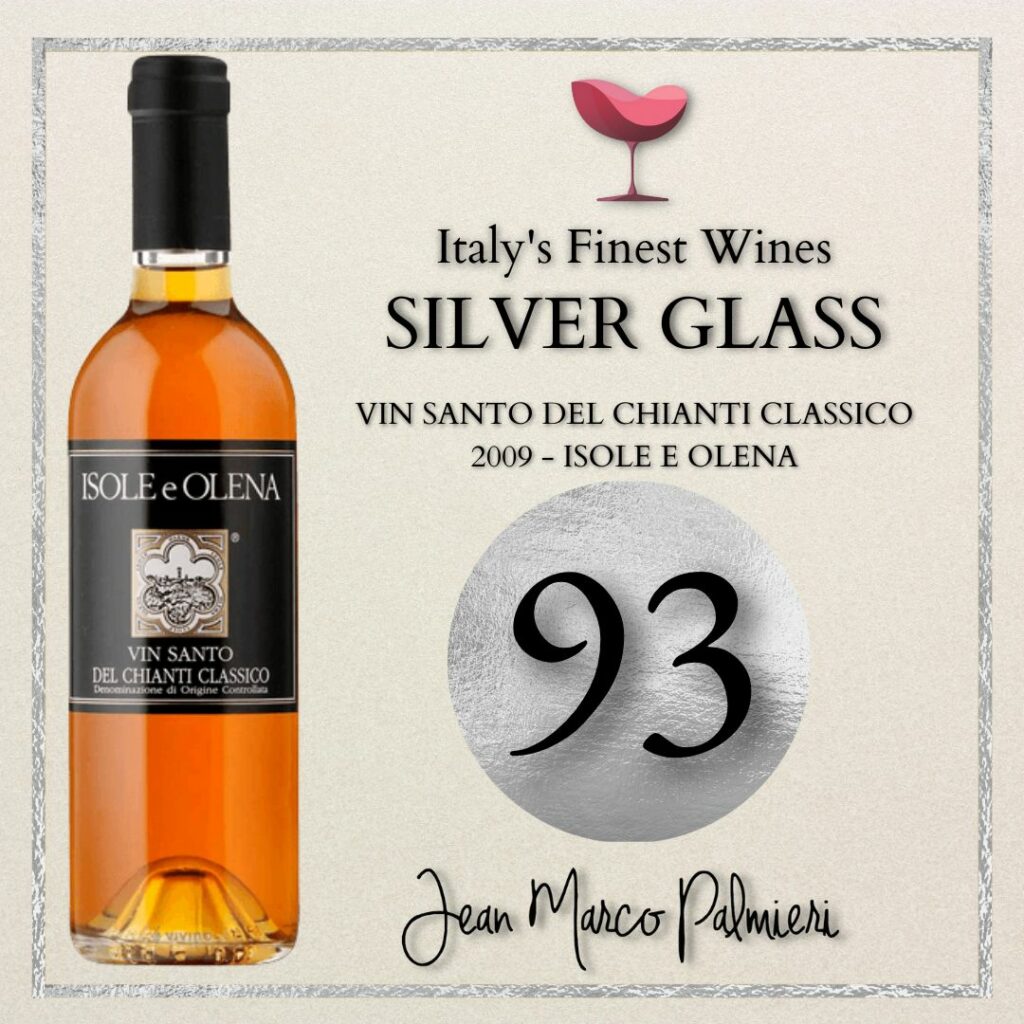
Characteristics: A riot of ripe and tropical yellow pulp fruits that fade towards citrus, resin and caramel tones and delicate balsamic sensations.
A strong wine with a meditative character: the palate is sweet with a particularly pronounced acidity that gives it great smoothness.
The Vin Santo di Isole e Olena is obtained from hand-picked Malvasia and Trebbiano grapes which, after undergoing a rigorous selection, are subjected to natural drying. The conservation and the long aging takes place in traditional kegs.
A lysergic wine of great eloquence: it fascinates the nose with intense and multifaceted aromas and unravels on the palate material, dense and of imperishable persistence. To be counted among the best Vin Santo.
Grapes: Malvasia, Trebbiano
Area: Chianti Classico (Barberino Tavernelle)
Vin Santo del Chianti Classico 2009 – Fèlsina
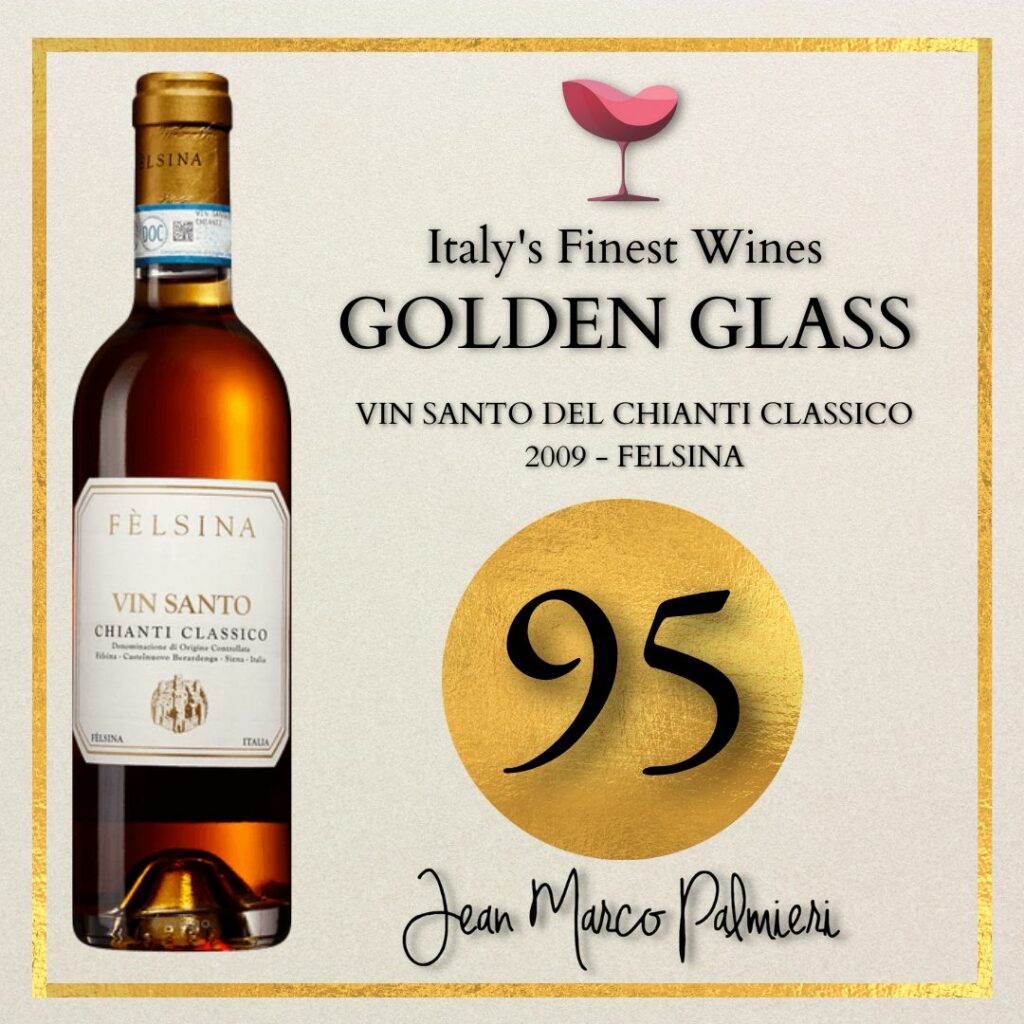
Characteristics: Aromatic layered profile: opens on notes of candied orange peel, to continue towards tones of honey, saffron and wild mint. On the palate it flows sweet, dense and voluminous. Well balanced finish, with great persistence and cleanliness.
The bunches are subjected to natural drying on racks, until December and sometimes even until January-February of the year following the harvest. After crushing, the must is transferred into sealed oak barrels of 100 l, with the ‘mother’. After 7 years in the vinsantaia it is aged for at least 6 months in the bottle before being marketed.
From one of the most virtuous cellars of Chianti Classico, Vin Santo di Felsina is a wine of unusual finesse and balance obtained from Trebbiano, Malvasia and Sangiovese. Fully among the best Vin Santo for complexity and persistence.
Grapes: Trebbiano, Malvasia and Sangiovese
Area: Chianti Classico (Castelnuovo Berardenga)
Vin Santo San Nicolò 2015 – Castellare di Castellina
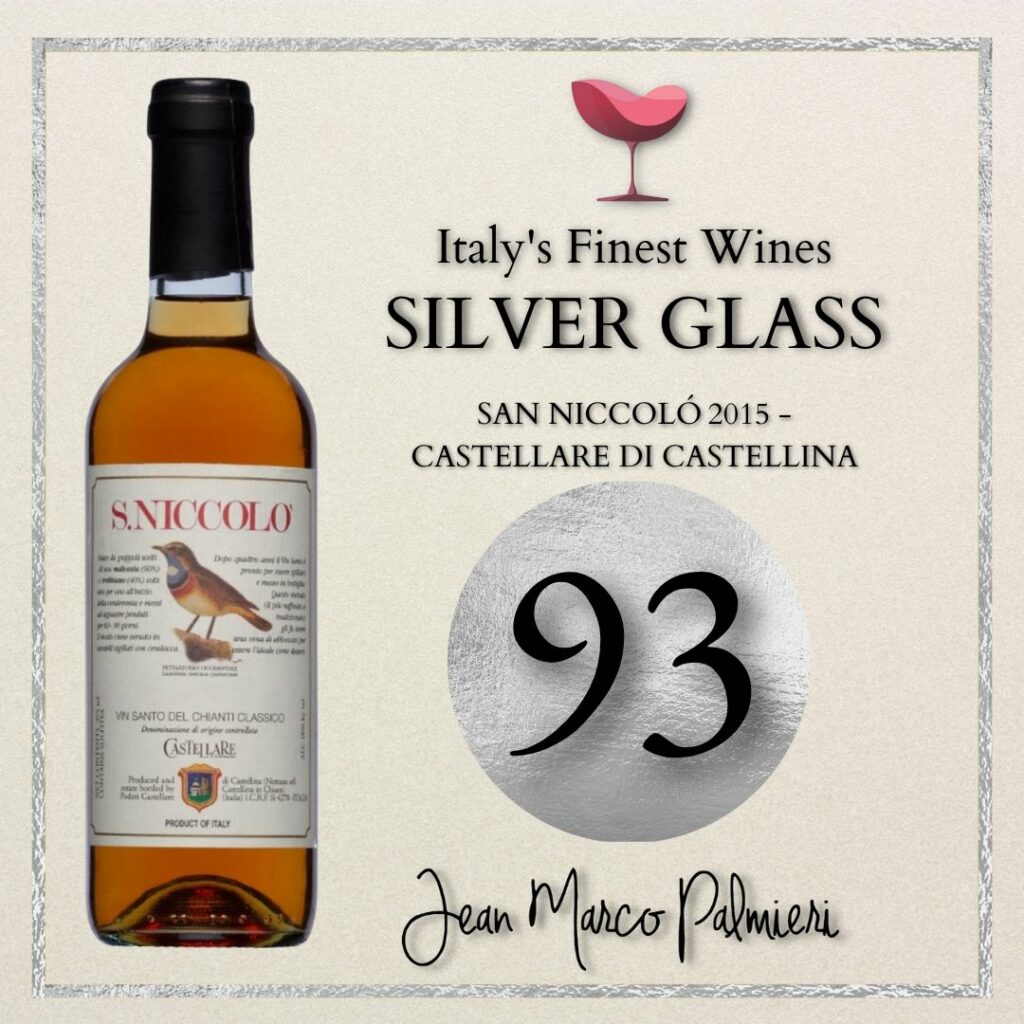
Characteristics: Fresh and fragrant olfactory range, with delicate nuances of bitter orange marmalade that blend with hints of Dijon mustard and salt. In the mouth it is extraordinarily voluminous with a persistent finish of good cleanliness that confirms the sense of smell.
Drying of the hanging grapes, not on the reeds, in a ventilated environment and long fermentation in oak barrels with 20-30 year old mothers and aging 60 months in oak and chestnut barrels.
A Vin Santo of great taste-olfactory eloquence capable of maximizing the expressiveness and richness of Malvasia and Trebbiano.
Fully qualified among the best Vin Santo
Grapes: Malvasia Bianca 60%, Trebbiano Toscano 40%
Area: Chianti Classico (Castellina in Chianti)
‘Vinsangiusto’ San Giusto a Rentennano 2010 – San Giusto a Rentennano
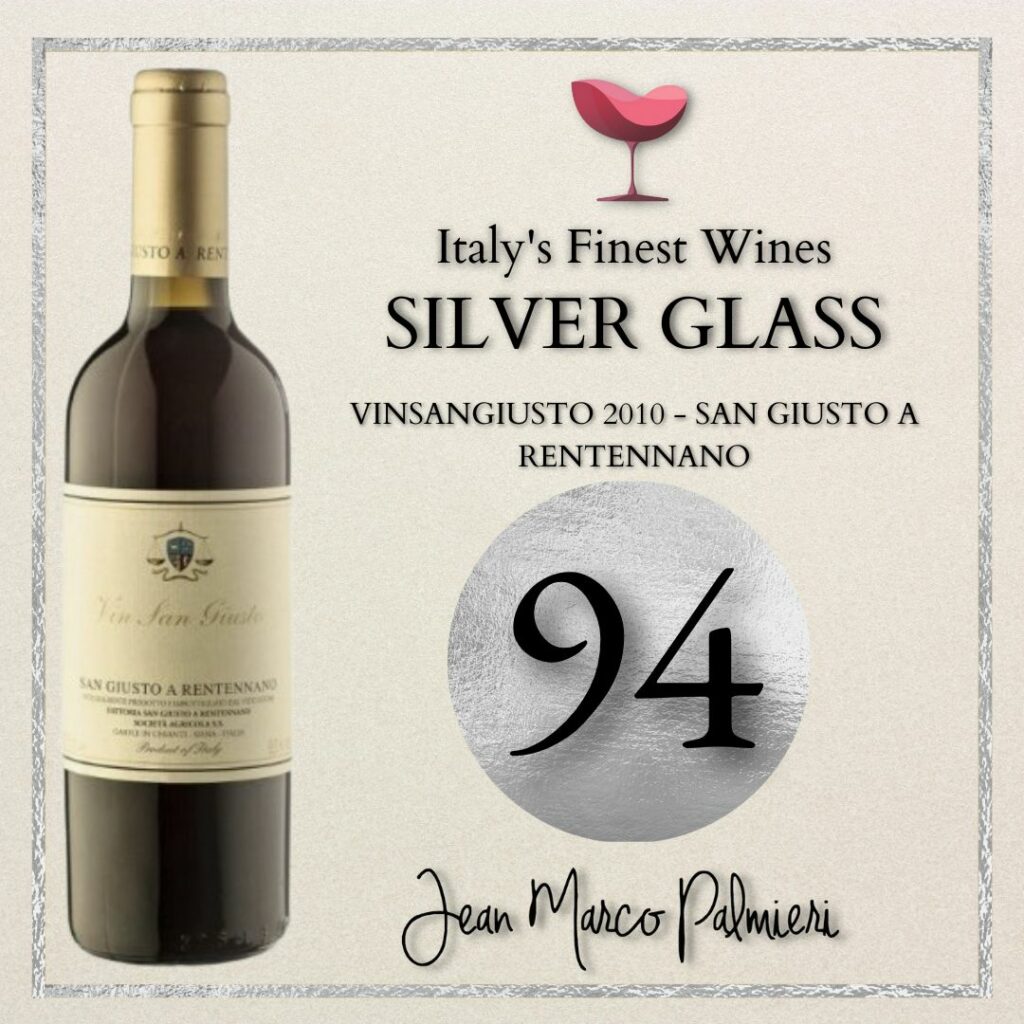
The aromatic framework is intense, multifaceted and fresh with succession of saffron that veers towards tones of dehydrated figs, almond notes and sweet spices. On the palate it is sweet and voluminous and supported by a great acid backbone. The alternating note between sweetness and iodized mineral nuances that embellish the presence on the palate is interesting.
Withering of the grapes on racks for 80 days and alcoholic fermentation with indigenous yeasts and aging for 72 months in chestnut and oak barrels from 50 to 200 liters of impregnating capacity of ‘mother’ yeasts.
Virtuous testimony of Chianti Classico passito wine. The aging potential is very interesting.
Grapes: Malvasia del Chianti, Trebbiano Toscano.
Area: Chianti Classico (Gaiole in Chianti)
Vin Santo del Chianti ‘Occhio di Pernice 2016 – I Veroni
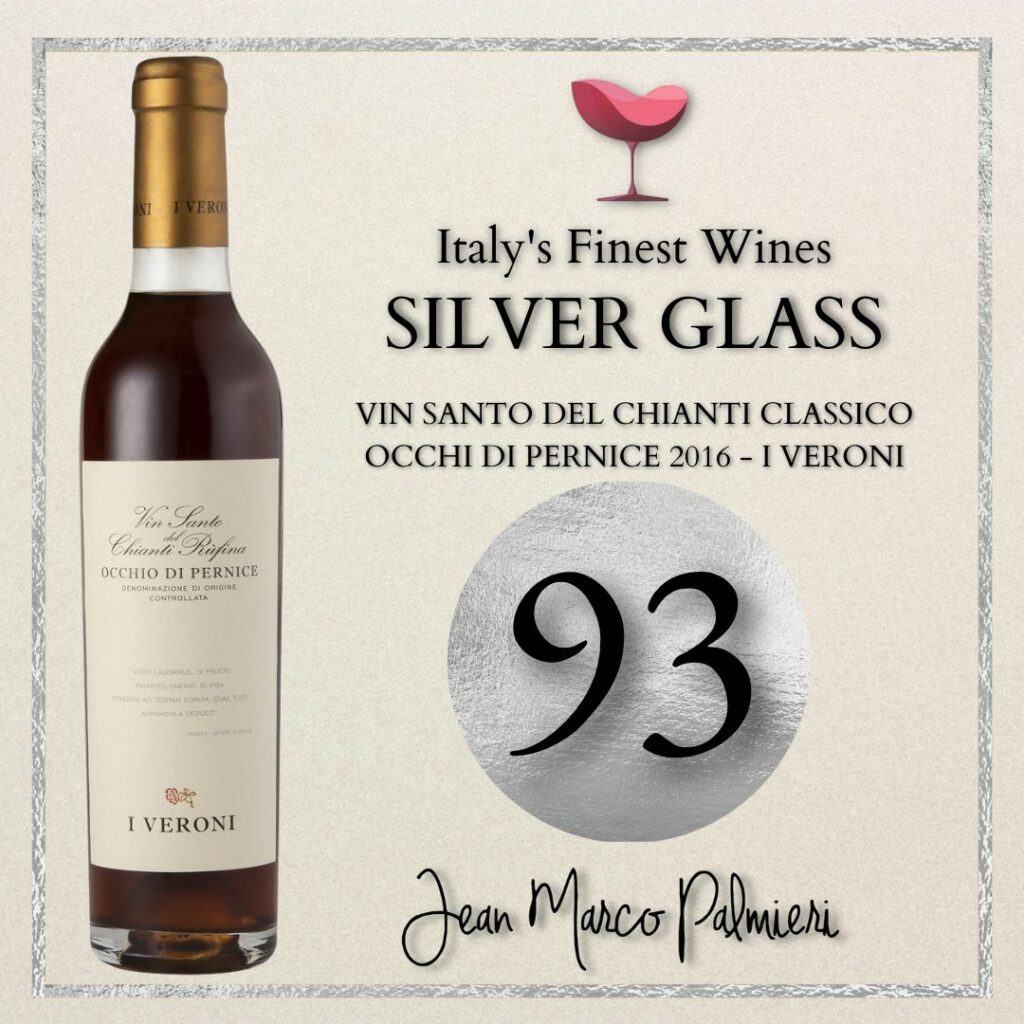
Characteristics: Strong notes of candied black cherry, walnut husk, undergrowth and toasted hazelnuts emerge on the nose. The sip is rich, full and soft, supported by a nice acidity that culminates in a finish with continuous fruity and sweet echoes.
Soft pressing of the dried grapes in racks and alcoholic fermentation with static decantation in 100 liter kegs and aging 8 years in chestnut and oak kegs and 14 months in bottle.
Dalla Rufina one of the best Vin Santo for balance between the sweet component and freshness. Virtuous interpretation of Vin Santo Occhio di Pernice.
Grapes: Sangiovese 60%, Canaiolo 20% and Malvasia Bianca 20%
Area: Chianti Rufina
Vin Santo del Chianti Classico ‘Ceppetto’ – Mannucci Droandi
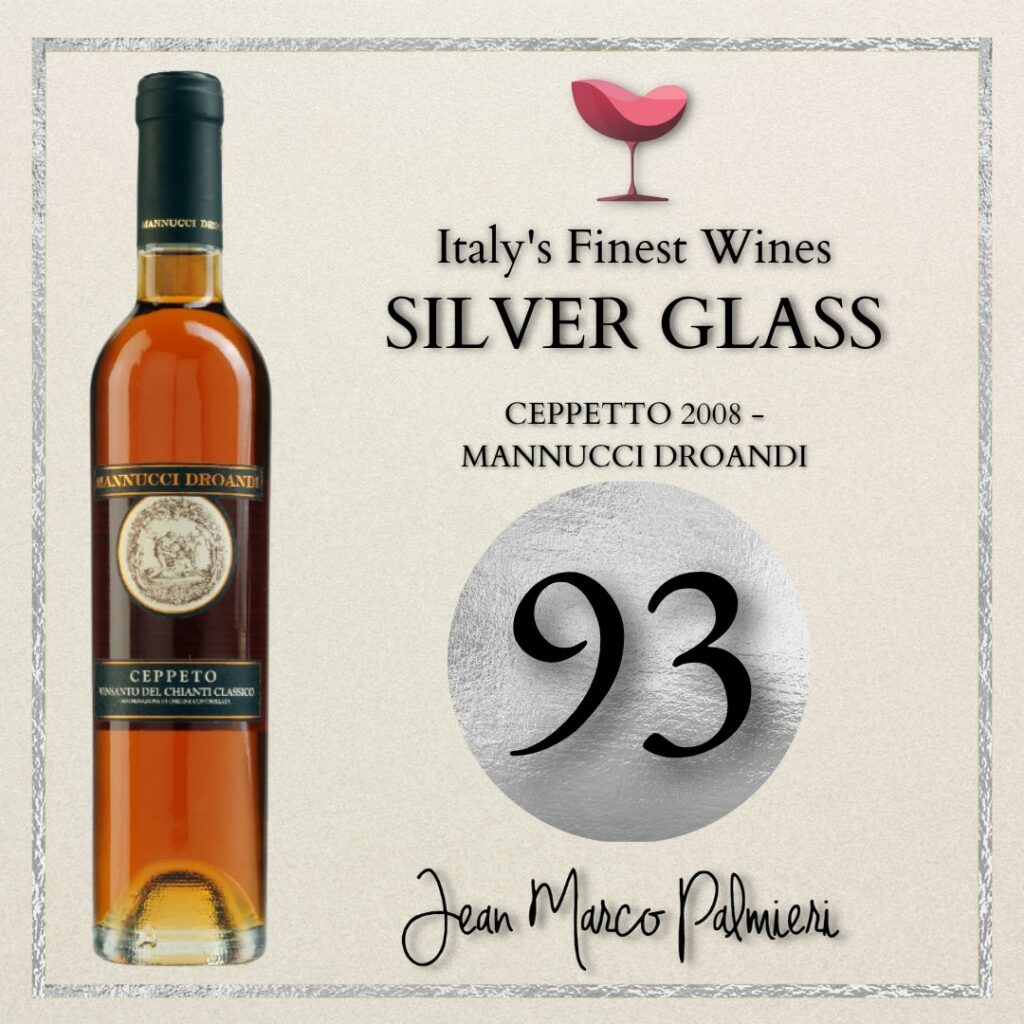
Characteristics: Papaya and yellow peach in syrup blend with sandalwood, aromatic herbs and flint. On the palate it flows soft and deep, with a sweet and fresh net. Long finish of great harmony.
The chosen bunches are left to dry indoors. The little must that is obtained is left to ferment and then to mature ‘on the mother’. The wine refines in casks without undergoing further decanting or other interventions of any kind for at least four years after the harvest.
From Gaiole in Chianti a wine with an artisanal and classic character, to be counted among the best Vin Santo for its ability to masterfully combine sweetness and freshness.
Grapes: Trebbiano 50%, Malvasia Bianca del Chianti 30% and San Colombano 20%.
Area: Chianti Classico (Gaiole in Chianti)
Vinsanto del Chianti Classico 2015 – Volpaia
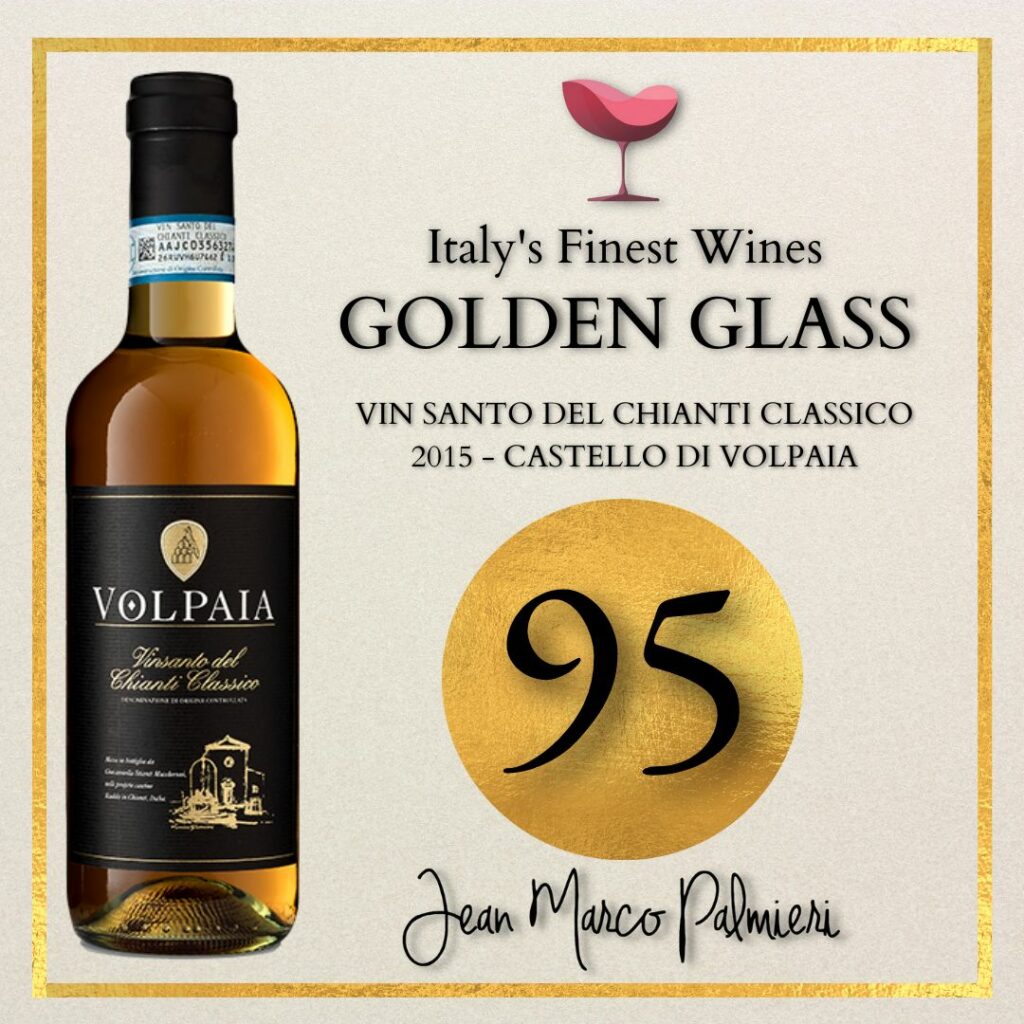
Characteristics: Nose initially played on floral notes of orange blossom, flanked by tropical fruit notes, embellished with more enigmatic hints of gentian and candied ginger. Palate characterized by enveloping sweetness and a final of imperishable persistence with echoes in which the fruit echoes the protagonist.
The best bunches of Trebbiano and Malvasia are transported to the vinsantaia where they dry until February. The dried grapes are then pressed and the must obtained, after a natural clarification, is decanted into traditional oak casks together with the mother, where fermentation and aging continues for 5 years. At the end of this period, the Vinsanto is separated from the mother, clarified and bottled.
One of the best Vin Santo for its classic character: the alternating note of iodized flavor and sweetness creates a very convincing dialectic.
Grapes: Trebbiano, Malvasia
Area: Chianti Classico (Radda in Chianti)
Vin Santo del Chianti Classico ‘La Chimera’ 2007 – Castello di Monsanto
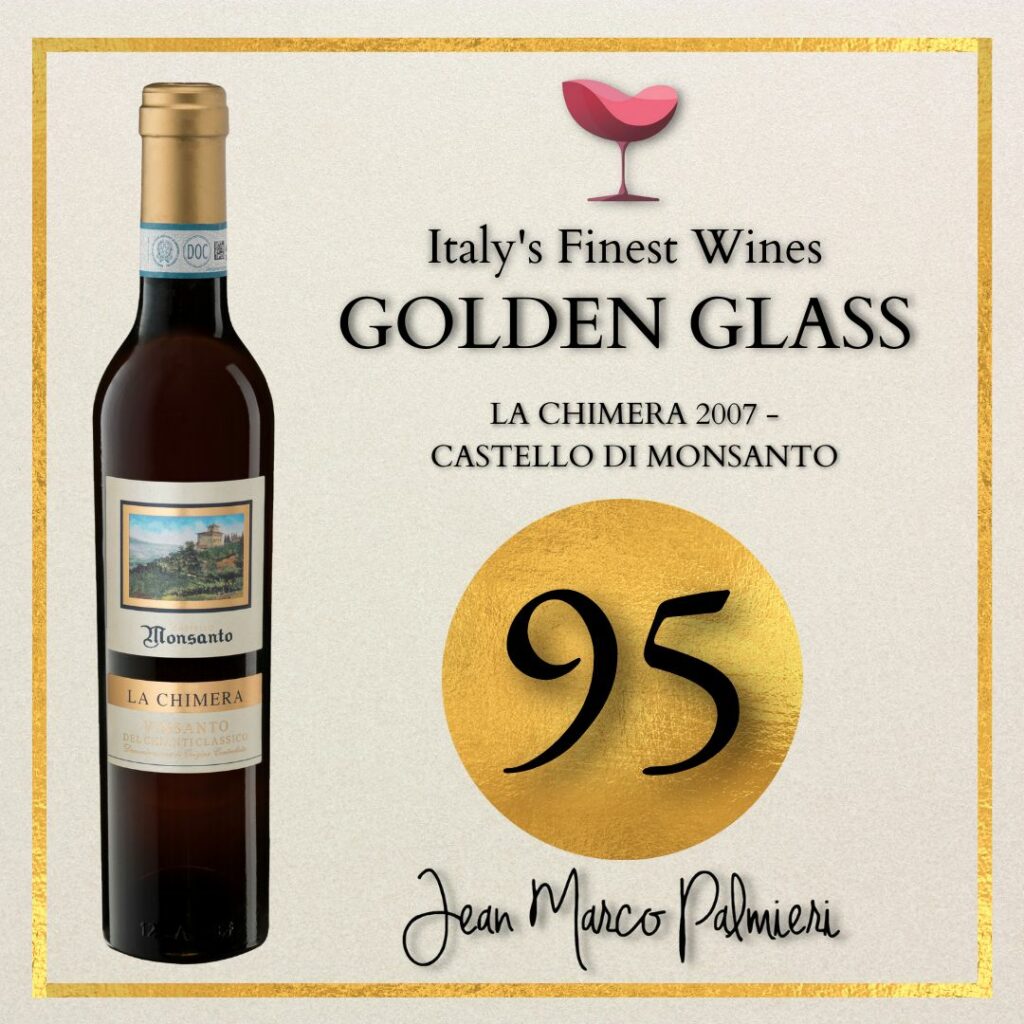
Characteristics: Wide aromatic range on which candied apricot, orange blossom honey, quince and dates stand out. The sip is sweet, enveloping and masterfully balanced between acidity and flavor. Long and very clean finish.
From Trebbiano and Malvasia grapes harvested in October and left to dry until early February, Vinsanto del Castello di Monsanto is produced following the most rigid tradition: leaving the must for a decade in small kegs exposed summer and winter to the bad weather of the vinsantaia.
Deservedly among the best Vin Santo for elegance and versatility in food pairing.
Grapes: Trebbiano, Malvasia
Region: Chianti Classico (Barberino Tavernelle)
Vin Santo Bianco dell’Empolese 2008 – Piazzano
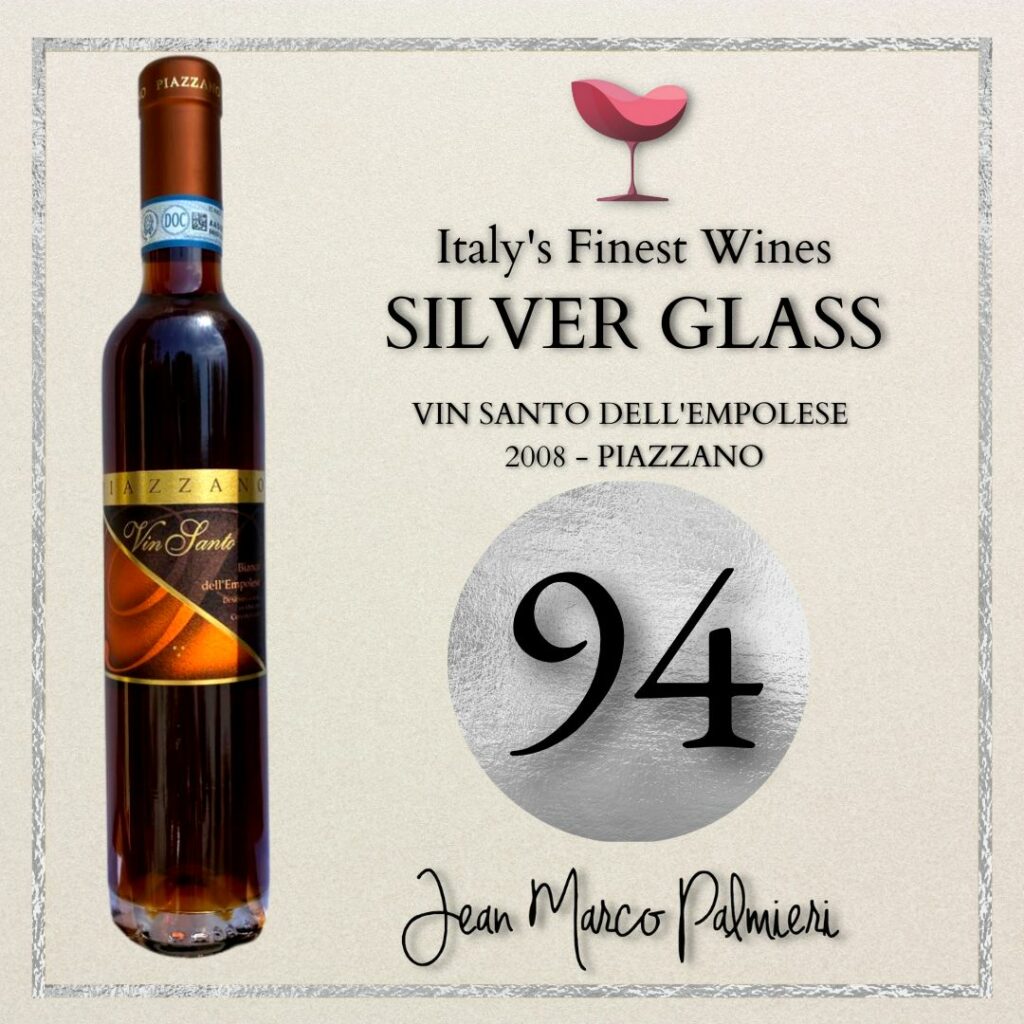
Characteristics: Characteristics: Aroma all played with candied figs, resin, acacia honey, dehydrated dates and toasted almonds. The sip is full and juicy, with a very pleasant brackish vein that enters into synergy with the fruit, which on the finish is the protagonist.
Slow drying of the grapes on racks until the end of December, first week of January. Fermentation in barrels of 50 or 100 liters assembled with different woods: chestnut, oak, cherry, acacia, mulberry, where it remains for at least five years; refinement in the bottle for at least six / eight months.
From the historic cellar of the Empoli area, a Vin Santo of great character. Undoubtedly among the best Vin Santo for its exciting, unique and original character.
Grapes: San Colombano, Trebbiano Toscano, white Malvasia.
Area: Empoli
WHAT TO MATCH WITH VIN SANTO?
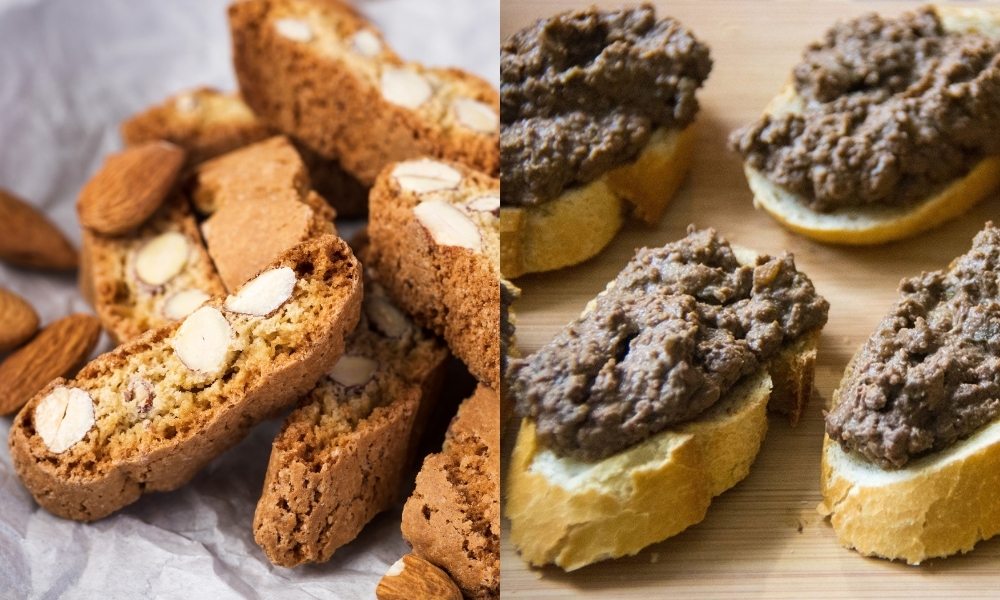
What are the best combinations with Vin Santo? Among the various possibilities, Vin Santo is recommended both with sweet ingredients such as leavened cakes, pies, pastries, chocolate or in contrast with savory ingredients with a bitter tendency such as blue cheeses, aged cheeses, liver-based preparations, and foie gras.
Among the combinations with Vin Santo we can mention the classic Cantucci. Although it is common practice to soak them, when tasting quality Vin Santo it is recommended to limit oneself to accompanying them to preserve their organoleptic integrity.
Among the examples of combinations with Vin Santo in addition to Cantucci, desserts of the Tuscan tradition such as Panforte, Schiacciata with grapes, Castagnaccio or Zuccotto should be considered.
Also interesting are the combinations with savory dishes with a bitter background such as Fegatini (which are traditionally blended with Vin Santo), Renaissance stew, wild boar in dolceforte or pork with prunes and dried figs.
In the case of cocoa-based dishes, you can opt for more complex Vin Santo and red grapes such as Vin Santo Occhio di Pernice.
What are the best Vin Santo?

What is the best Vin Santo? Choosing is a difficult undertaking, which however inevitably is subject to the limits of a subjective opinion, which as such, by definition, is deficient and arbitrary.
We have simply compiled a list of our favorite interpretations according to our evaluations. However, it remains essential to underline that wine is not born to be prestigious, exhibited or flaunted.
But to excite us and be shared in a genuine way with the people we love, binding ourselves to contingent situations and to the unrepeatable and intimate moments of our life.
Therefore, we invite you to visit wineries and get to know the producers who produce wines in their uniqueness, so that you can independently discover and choose the wine that can be counted for you among your personal favorite wines. If you have had the patience to read this far, thank you for your attention, but now is the time to fill the glasses and cut distant hopes, and therefore:
Cheers, Salute, Santé





